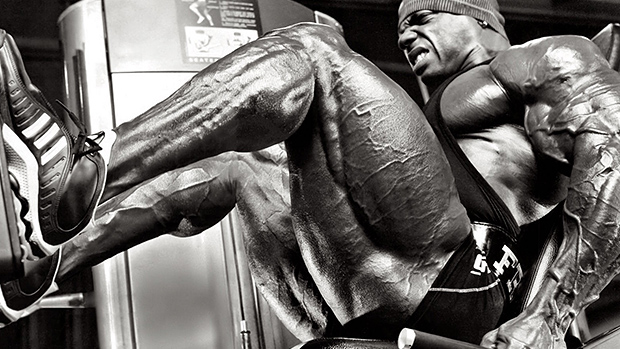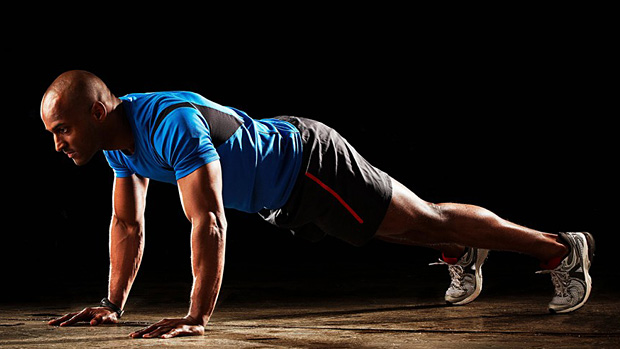Ask Me Anything
I receive great questions in my T Nation Community Coaching Lab. If you have one for me, just drop it there. But first, check out these recent Q&As.

Question: What percent body fat is the most anabolic, and where do you feel the best? Is that a good place to start a muscle growth phase?
It's not the same for everybody. Though technically, the leaner you are, the better your insulin sensitivity. This is important because it improves nutrient partitioning, which will help your body preferentially store nutrients in muscle tissue rather than fat.
Plus, when you're leaner, work capacity is higher. You'll also likely recover faster. Blood pressure will be lower, and you'll probably be less tired throughout the day. If you have an extra 20 pounds of fat on you, it's like spending the whole day walking with a 20-pound backpack.
However, if you get too lean relative to your natural set point, you can start to have negative adaptations, like these:
- Sex hormones can decrease, lowering your sex drive or even giving you erectile dysfunction.
- Cortisol will increase, making it harder to build muscle and recover from training.
- Leptin may decrease while ghrelin increases, giving you cravings and making you lazier.
- Adrenaline can stay elevated, even in the evening, making it hard to sleep.
So what's the answer? Get as lean as possible without being too far from your natural set point.
What's your natural set point? It's the body fat level that you stay at naturally. When you lose fat, your body will want to get back to what feels normal, and the further away from what it considers normal, the more bad stuff happens to force you to go back up.
Now, being 2-5% lower than your set point is easily maintainable. But when you get down to 6-8% lower than your set point, you'll start to have negative changes (like those mentioned above). The lower you go, the more of them you'll have.
For example, if your natural set point is around 18% body fat, then maintaining 13-16% is pretty easy. But if you go down to 10% or less, you'll begin to have problems.
The good news? You can gradually adjust your set point downwards. The bad news? It takes time.
For example, if your set point is 18% and you go down to 13% but stay there for a long time (if you got there in a sustainable manner), then your body will slowly adjust its set point. After a fairly long period, your set point will now be 13-14% rather than 18%.
This will both make it easier to stay lean and also make it possible to go down to as low as 9-10% and maintain it without ill effects. That's why I can now stay at 9-10% with very little effort and can be as low as 7-8% and maintain it. But years ago, as a fat Olympic lifter, going down to 13% was uncomfortable.
It takes a long time to adjust your set point. You need to be at a certain level for close to a YEAR for the body to adjust.
And while having a lower set point makes it less likely that you'll gain lots of fat, you can still get fatter if you eat too much. (When I get above 12-13%, my appetite dies, which makes "bulking" pretty much impossible.) And if you let your body fat creep up higher than your set point, it will readjust back up. Be careful because, sadly, upward adjustment is faster than downward adjustment.
What percentage of body fat should you start your muscle gain phase from? Well, the leaner, the better. First, because of the insulin sensitivity issue. But also because in a proper muscle-gain phase, you're bound to gain some fat. If you start from a very lean state, you have more leeway to add body fat while still looking good. So it's perfectly fine to diet down to a bit lower than your "maintainable/comfortable" level and build from there.

Question: Why are bodybuilders weaker than powerlifters if they have more muscle?
This isn't always the case and lacks context. But provided that they're at the same competitive level and at a similar weight, yes, most of the time, it will hold true. What are the reasons?
1. Better neurological efficiency
Strength is a function of both muscle size and neurological factors. The former determines your strength potential; the latter determines how much of that potential strength you can use.
The neurological factors involved in force production are improved the most when you train heavy (1-5 hard reps per set). That's a zone most bodybuilders avoid since they tend to stick to 6-12 reps per set.
2. Better technical efficiency
The squat, bench, and deadlift are not as technically simple as people think. Granted, they're simpler than a snatch or clean & jerk, but optimizing lifting technique on the three powerlifts takes time and practice. Heck, you have elite lifters still working on improving their technical efficiency even after 20-plus years of lifting!
Learning to do these lifts is simple, but optimizing technique to increase every possible pound is very complex. Bodybuilders normally just set up under the bar and lift. Powerlifters spend years perfecting their technique, which allows them to move more weight.
3. Difference in muscle tissue structure
A muscle is made of muscle fibers. Each fiber goes from one end of the muscle to the other. But it's not one continuous fiber. Rather, it's a series of muscle fiber segments attached together by micro-tendons. Those micro-tendons, just like your actual large tendons, respond to load. They get more resilient over time when they have to resist intense loading. Heavy weights are better at making them more solid and resilient.
A powerlifter who trains heavy will have tougher micro-tendons than the bodybuilder who trains lighter but with more volume. The result? The powerlifter's muscle tissue is more resistant to heavy loading. This makes the body more likely to "allow" them to use a greater percentage of their strength potential because their risk of injury is lower.
4. Difference in fiber adaptations
Pure hypertrophy training, especially with slightly higher reps (10-20 reps per set), will lead to a conversion of the fast-twitch fibers into intermediate fibers. Those hybrid fibers have a high potential for growth while being fairly fatigue-resistant. So they're optimally adapted to the type of work that a bodybuilder does.
5. Less Golgi tendon organs inhibition (GTO)
The GTOs are sensors situated in your tendons. Their job is to protect you against yourself. Specifically, when they sense that you're producing too much force with your muscles (even within your potential), they'll inhibit further force production to avoid tearing your muscles or tendons apart.
This mechanism is overly protective. That's why a normal person can only use around 30% of their strength potential. As you use more weight, you can desensitize those receptors, allowing you to use a greater percentage of your potential.
The more your training focuses on heavy loading, the more you can desensitize your GTOs and the more of your strength potential you can use. An elite strength athlete (powerlifter or weightlifter) might be able to use up to 90% of their potential, while a bodybuilder might only be able to use 70%.

Question: I want to look jacked and be as strong as an ox, but I also want to get fast and move like an athlete. How should I train?
Building muscle is hard and takes time. Getting strong is hard and takes time. Becoming fast is hard and takes time. Moving like an athlete is hard and takes time. See a pattern?
Each of these goals is hard to reach unless you're a genetic freak. Heck, a person could devote his or her whole life to achieving a high level in ONE of those categories and still not reach an elite level.
The chances of an average, non-beginner achieving all of those at the same time are abysmally low. Trying to get all of that at the same time will, at best, lead to a small improvement in all of them. At worst, it will overtrain you and leave you injured.
Instead, focus on one or two (related) goals at a time and do everything to get them up as high as possible. This is also hard and takes time. Once you reach a satisfactory level, pivot to the next goal while maintaining your gains in the previous capacities.
What things can we effectively train together (at a higher level)?
- Strength and Hypertrophy
- Strength and Power
- Power and Speed
- Anaerobic Capacity and Aerobic Power
So that's four different training cycles, which you could use as a seasonal approach:
Autumn: Strength and hypertrophy
Winter: Strength and power (explosive lifting, jumps, throws) and low-volume/maintenance hypertrophy
Spring: Power and speed/agility and low-volume maintenance strength
Summer: Energy systems and low-volume maintenance strength
That's the approach that a friend of mine has been using for over 20 years, and at 55, he looks 30 and is stronger, faster, leaner, and fitter than many athletes.





